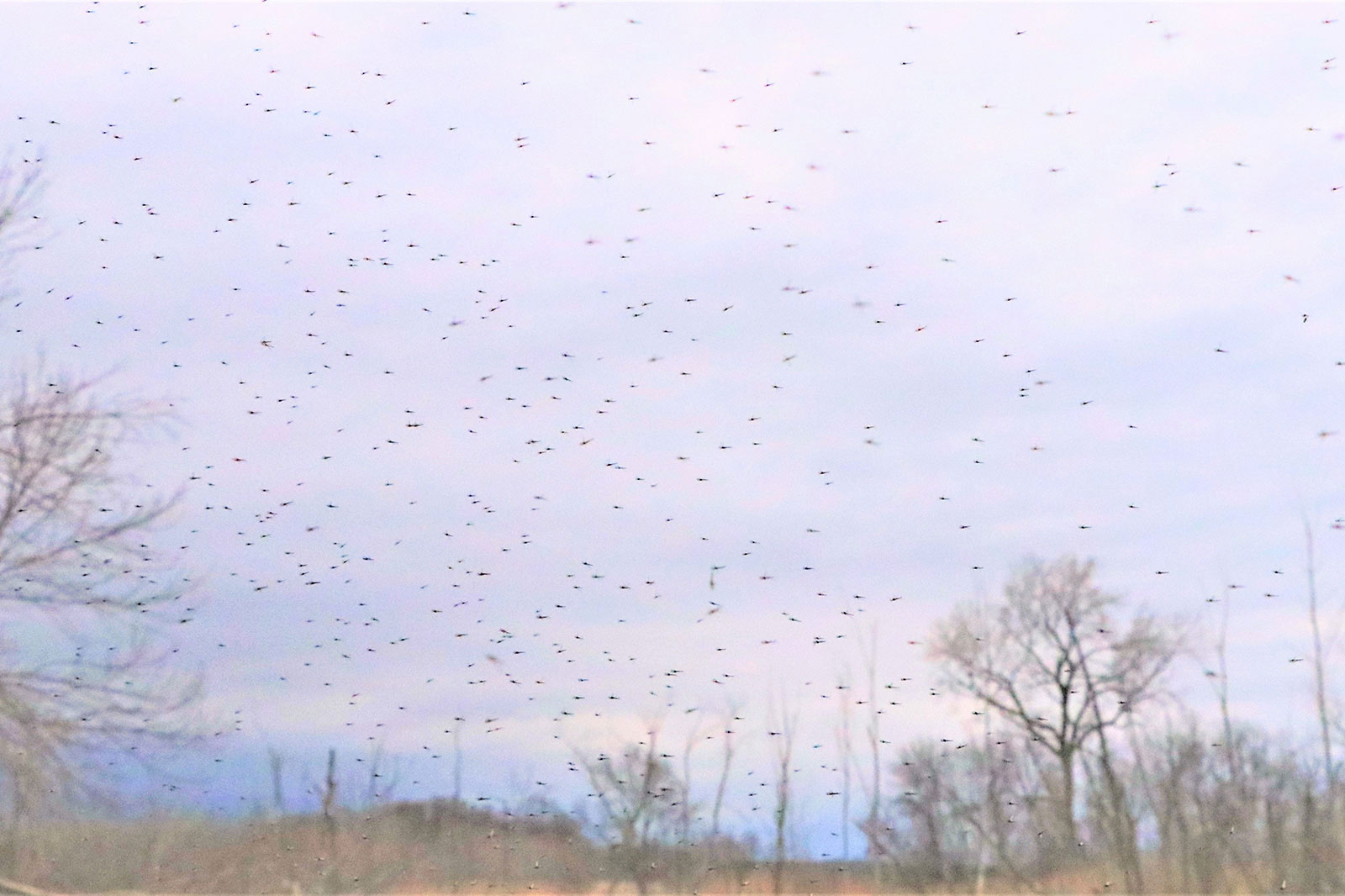Hello again, everyone. Welcome back to another edition of Capturing Kenosha, a column devoted to the natural world around us, right here in southeastern Wisconsin.
Have you ventured down to the shores of Lake Michigan in the past week?

If you have, I’m sure you noticed the midge flies swarms have returned in massive numbers this year. I was there taking my usual morning sunrise shots when all of a sudden I realized I was completely engulfed in a cloud of those little buggers. So, naturally, this week’s article became the life cycle and purpose of a midge fly.
If you’ve been around Lake Michigan in the early spring, you’ve probably run across swarms of midges. You know, those tiny little insects that appear in swarms by the thousands every year around this time. They can cover you, your car, your boat, or even your dog if you stop unsuspectingly even for just a few seconds.
While they don’t bite or spread disease, their sheer numbers can make you go a little crazy. Everyone seems to have a different nickname for them depending on who you ask and the area you’re from. They can be known as non-biting midges, lake flies, sand flies, bay flies, muckleheads, muffleheads, Canadian soldiers, blind mosquitoes, or chizzywinks.
Really, these are the names I found online for them. But what are these little bugs, really? Scientifically, they’re known as chironomus plumosus. These little flies live most of their lives in the waters along our shoreline.
The life cycle of a midge is a little unusual. They start life as worm-like larvae that trout love to eat in great quantities. Midges have a pupa stage while in the water, which is readily spotted near the surface by a foraging trout. Once they hatch on the surface of the water from the pupae and sprout their wings, the adult midges will quickly fly away.
Sometimes, though, the wind or cold can prevent them from flying away and they become easy pickings for hungry fish. Those that do get into the air get right to business mating. And for good reason. The adults only live for about 3-5 days.
It’s true that midges have a very short life cycle and do not have the ability to eat because the adult midges we have around the Great Lakes have no mouths. You see, they have only one goal in mind once they hit the air and that’s mating! It’s a kind of frenzy from the very moment they emerge from the surface of the water to fulfill their one purpose in life — “Hurry up and mate before you die.”


This is what nature has designed them to do as adults. Males exist to fertilize the females and the females exist to lay their eggs on the surface of the water where they are going to sink and develop into the larvae for next year’s hatch. Then in the spring, the cycle starts all over again.
So, why do midges even exist in nature? Do they serve some special purpose?
They actually do serve a very strong ecological role as a food source. Where the food chain is concerned, they transfer energy from the water across a border to the land by providing food for other living creatures both in and out of the water. Midges are so small that they might seem insignificant to the food chain, but actually they are a big part of it because they are a significant source of food for both trout and salmon even when the fish are in the fingerling stage of their life cycle.
Once the midges emerge from the water as adult flies and take to the air, birds like swallows and martins or even bats will use them as a food source. Even other insects like dragonflies will feed upon them.
So, are they dangerous to humans?
From a human health perspective, you don’t need to worry about midges as they are not carriers of disease and they have no mouths so they’re not going to bite you. If you’re inadvertently swarmed by them, it’s going to be okay. You won’t be affected in any way other than a bit of anxiety you may experience from being surrounded by thousands of mating midges.

If it does happen, maybe just take a moment to appreciate the circle of life taking place all around you right in front of your eyes. At least until one of these buggers flies into your ear or up your nose, because that’s the worst thing ever.
Walking further away from the water seems to be effective, too. Don’t fret, they’ll be gone before you know it. Just give them a couple weeks to keep on keepin’ on.
My tip for dealing with them is to visit the lake when it’s breezy because they have a hard time in the wind.















